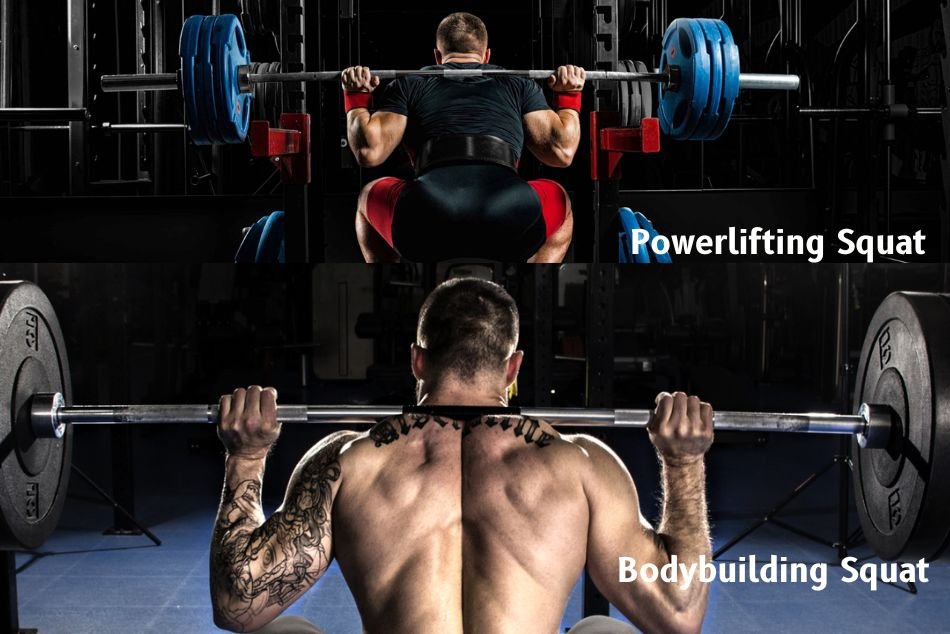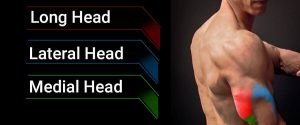Go Through Side-by-Side Differences of Powerlifting Squat vs. Bodybuilding Squat & Learn Which One Is Best for You
Beginners squatting once a week does get a result, but once you as a lifter get experience about lifting for one to two years, you’ve to decide whether your goal is to gain muscle size or get stronger legs, as both are entirely different. Here, we’re covering Powerlifting Squat vs. Bodybuilding Squat, which will make it easier for you to know how both differ and which one you should focus on to reach your goal.
To gain muscle size, you’ve to do a bodybuilding style squat, and to gain strength powerlifting style squat is preferable. Once you get over that noob gain phase, you’ll get difficulty, and no matter how hard you go with your workout, you’ll feel the plateau at one stage of your training. To overcome such difficulty, you’ll have to follow workouts according to your further goal.
No doubt you get some results, but to maximize your result, which can be either of strength or size, you’ve to make sure you’re squatting with the right methods. For instance, to gain muscle size in the legs, how much weight you lift doesn’t matter. On the other hand, if you want to gain strength and workout like a powerlifter, it doesn’t matter what’s the size of your legs and only how much weight you can lift is judged.

Let’s go through the side-by-side comparison of Powerlifting Squat vs. Bodybuilding Squat and learn the key components of each you should know about with differences between the both.
| Powerlifting Squats | Bodybuilding Squats | |
|---|---|---|
| Goal | The main goal is the maximum level of strength to lift as much weight as possible. | Hypertrophy is the goal. Put simply, the main training goal is the muscle development of the legs. |
| Best Rep Range | The 1 to 5 rep range is best. Further, the 1 to 3 rep range is also considered for maximum strength gains. | Ideally, 8 to 12 reps are best, but with lighter weights, you can even go for 25 to 50 reps. |
| Weights to Be Used | You can go as much heavy as possible. | The overall focus is muscle activation. Hence, moderate to heavy weight is considered good. |
| Tempo | Fast concentric phase for maximum strength gains. | A slower tempo is good, such as 3-1-X-1, for keeping constant muscle tension. |
| Time Under Tension | Short time under tension for power output. | Longer time under tension to achieve hypertrophy. |
| Placement of Barbell | Usually, low-bar squats are preferred. (Bar on rear deltoids). | Bar should be placed on traps. (High bar squats are preferable.) |
| Body Positioning | Torso should be leaned forward for maximum strength. | Upright torso to activate your quadriceps. |
| Rest In-Between Sets | 3 to 10 Minutes of rest period for maintaining maximum level of strength. | Based on intensity rest period varies between 1 to 3 minutes. |
| Range of Motion | According to powerlifting competition rules. Mostly, it should break parallel. | Deep squats, also called as the full range of motion, for better muscle growth. |
| Squat Stance | Wider squat stance for better hip engagement. | Shoulder width stance with toes in the slightly outward position. |
| Muscle Activation | The glutes, hips, and posterior chain are activated majorly. | It’s quadriceps focused; hence, hamstrings & glutes are more engaged. |
| Frequency of Training | 2 to 4 times a week, depending upon the workout program. | 1 to 2 times per week. |
| Pause | Pauses in squats help improve strength. | Pauses help contraction and stretching of leg muscles. |
| Top Phase | Used for rest points before going for the next repetition. | Quadriceps contraction to achieve hypertrophy. |
| Competition | Requirements of powerlifting rules in meets need to be followed for depth & execution. | There are no competition guidelines, and squats are performed entirely for aesthetics. |
Closing Thoughts
Both powerlifting and bodybuilding squats serve a specific purpose based on the training goals. For instance, if the overall goal of a lifter is to lift heavier weights and focus on the maximum level of strength, then powerlifting squats are the way to go. On the other hand, if the focus is to build leg muscle mass and hypertrophy then bodybuilding squats is an answer.
Both powerlifting and bodybuilding squat variations can be added to a well-planned workout routine because both powerlifters and bodybuilders can benefit from each of them. Here, we’ve covered a side-by-side comparison of powerlifting squat vs. bodybuilding squat. We hope it’ll help you understand it better.
Common FAQs on Powerlifting Squat vs. Bodybuilding Squat
Which Type of Squat Is Better for Building Strength?
The powerlifting squat focuses on building maximum strength because of its low-bar position and wide stance.
Which Type of Squats Are Good for Building Bigger Leg Muscles?
For building bigger leg muscles focus should be hypertrophy because it targets the muscles with a deep range of motion. Hence, bodybuilding style squat is good to go.
Can You Squat in Both Powerlifting and Bodybuilding Styles?
Yes, you can use both the powerlifting and bodybuilding style squatting methods to improve muscle growth and strength both.
Why Do Powerlifters Use Low Bar Squats?
The low bar squat technique gives better hip engagement, which reduces the dominance of the quadriceps and helps you lift heavier.
Which Type of Squat Is Better for Knee Health?
Done with proper form, both are safe and healthy. However, bodybuilding-style squats put more stress on your knees due to the upright torso.






